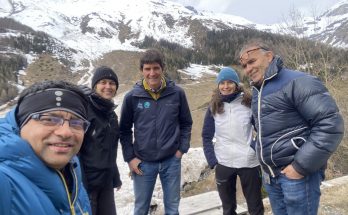The Swiss Alps, despite their breathtaking beauty, can hide many dangers such as structural instability. These can be caused by open fractures and ruptures resulting in a scree of several million cubic meters. Due to the extreme danger of this phenomenon for the local populations and for the economy laying the sense of understanding the mechanism of landslides is central to their prevention. This master’s thesis analyzes the series of events that took place in Randa, Switzerland between April 18 and May 9, 1991, that released around 30 million cubic meters of material and dammed the river below.
This thesis will take again one look at the events of those days and, based on the structural data of the previous scientific investigations, perform the back analysis, using the finite element method and shear strength reduction (SSR) approach to determinate the strength reduction factor (an equivalent of the factor of safety), supported by the modern software Rocscience (RS2 and RS3).
This study involves eight rockfall simulation models: three in 2D RS2 (events of April, May, and digitized Sartori profile); and five in 3D RS3 (two models of April, two of May, and one complete model comprising both incidents). Each of the models included the relatively similar input parameters, modified on each certain case study, and were used in all of the models depending on the rockfall circumstance; the Randa full model – an exceptional model combining all events – was the only case where all of the joints took place.
The created 2D and 3D models are filled with much more structures than was performed in earlier studies and accordingly test the slope stability in aim to estimate the prediction, precise location of the failure, and the kinematic mechanisms pattern under given circumstances with the new view from the recent generation of software.
Disaster Risk Reduction, Hazard Assesment, and Risk Analysis

